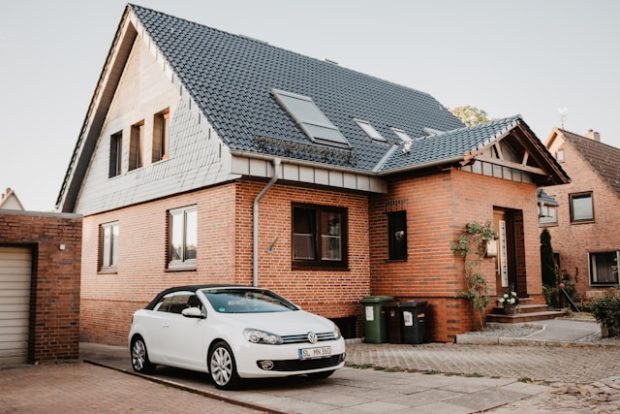In recent years, the frequency and intensity of extreme weather events has increased, posing significant risks to the durability and stability of buildings and structures. From hurricanes and floods to heavy rainfalls and snowstorms, these natural disasters can cause major damage and disruption to our built environment. As a result, the need for effective and reliable waterproofing systems has become more crucial than ever. Waterproofing not only protects buildings against water infiltration, but it also plays a critical role in enhancing their overall resilience and longevity. When it comes to protecting your property, trust only the expertise of quality waterproofing contractors. In this article, we will delve into the world of waterproofing and explore its wonders in enhancing building resilience. We will examine the various types of waterproofing techniques, their benefits, and their impact on the overall structural integrity of buildings. Furthermore, we will discuss the importance of incorporating waterproofing measures in building design and the role of professionals in ensuring effective and efficient waterproofing solutions. Join us as we uncover the wonders of waterproofing and its vital role in safeguarding our built environment against the unpredictable forces of nature.
Protect structures from water damage
Water damage is a pervasive threat to the integrity and longevity of structures, causing costly repairs and compromising the safety of occupants. To address this challenge, it is crucial to implement effective waterproofing measures that enhance the resilience of buildings. By utilizing innovative and reliable techniques, such as the application of waterproof membranes, sealants, and drainage systems, structures can be safeguarded from the harmful effects of moisture infiltration. These preventative measures not only mitigate the risk of water damage but also contribute to the overall durability and sustainability of buildings. Additionally, regular inspections and maintenance of existing waterproofing systems are essential to detect and address potential vulnerabilities before they escalate into significant issues. The implementation of comprehensive waterproofing strategies is a critical investment in preserving the structural integrity and ensuring the long-term functionality of buildings.
Invest in long-term building solutions
Investing in long-term building solutions is paramount for enhancing the resilience of structures against various environmental challenges. By prioritizing durable materials and construction methods, such as reinforced concrete, high-quality insulation, and corrosion-resistant coatings, building owners can ensure the longevity and reliability of their properties. Additionally, incorporating energy-efficient systems, such as sustainable heating, ventilation, and air conditioning (HVAC) systems, not only reduces operational costs but also minimizes the environmental footprint of the building. Furthermore, adopting smart technologies, such as automated monitoring and control systems, allows for real-time tracking of key parameters, enabling proactive maintenance and timely intervention. These long-term building solutions not only provide immediate benefits in terms of structural strength and energy efficiency but also offer lasting value and peace of mind for building owners and occupants alike.
Waterproofing techniques for all climates
To safeguard structures against water infiltration and moisture damage, implementing effective waterproofing techniques is essential across all climates. In regions with high rainfall, a combination of external barriers, such as impermeable membranes, sealants, and robust drainage systems, can be employed to prevent water seepage into the building envelope. In drier climates prone to excessive evaporation, internal waterproof coatings and sealants can be applied to protect vulnerable areas, such as basements and bathrooms, from potential leaks and humidity. Additionally, incorporating proper insulation and ventilation systems helps to regulate indoor humidity levels, mitigating the risk of condensation and mold growth. By choosing tailored waterproofing strategies based on local climatic conditions, building owners can ensure the resilience and longevity of their structures, regardless of the environment they are situated in.
Minimize repair and maintenance costs
To maximize cost-effectiveness and minimize repair and maintenance costs, it is crucial to prioritize proactive waterproofing measures. By addressing potential vulnerabilities before they manifest into larger issues, building owners can avoid costly repairs and ongoing maintenance expenses. Regular inspections of the building envelope, both internally and externally, should be conducted to identify any signs of water damage, such as dampness, discoloration, or mold growth. Timely repairs of any identified leaks or weak points in the waterproofing system can prevent further deterioration and mitigate the risk of structural damage. Investing in high-quality materials and skilled professionals during the initial waterproofing installation can also contribute to long-term cost savings, as inferior products and subpar workmanship may require more frequent repairs and replacements. By prioritizing preventive measures and ensuring the integrity of the waterproofing system, building owners can effectively minimize repair and maintenance costs and safeguard the longevity of their structures.
Increase property value and durability
Enhancing the durability and waterproofing capabilities of a building not only safeguards its structural integrity but also has a significant impact on its overall value. A well-maintained and waterproofed property is highly sought after by potential buyers and investors, as it demonstrates a commitment to long-term sustainability and protection against moisture-related issues. By investing in effective waterproofing solutions, property owners can increase the lifespan of their building, reducing the need for costly repairs and renovations in the future. Additionally, the enhanced durability provided by a comprehensive waterproofing system can withstand natural elements, such as heavy rainfall or extreme temperatures, resulting in a more resilient and desirable property. Ultimately, prioritizing waterproofing measures not only ensures the longevity of the building but also adds value and appeal to potential buyers or tenants.
Conclusion
Waterproofing is a vital aspect of building resilience that should not be overlooked. With the increasing frequency and intensity of natural disasters, it is crucial for buildings to have proper waterproofing measures in place to protect against water damage. Not only does waterproofing enhance a building’s durability and longevity, but it also contributes to the safety and well-being of its occupants. By investing in high-quality waterproofing solutions, we can ensure that our buildings are able to withstand the elements and remain resilient for years to come.
Read More:


